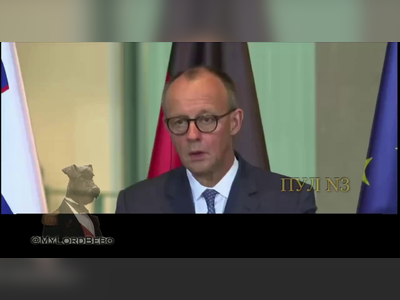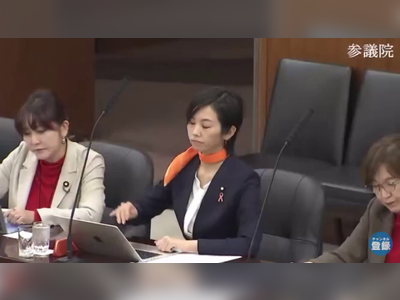
Record Housing Prices Challenge Students and Young Professionals in Major Italian Cities
Rising rental costs in cities like Milan and Rome pose challenges for students and young professionals, with limited affordable accommodation options.
Housing costs have reached unprecedented levels in major Italian cities such as Milan, Florence, and Rome, posing significant challenges for students and young professionals seeking accommodation.
Data from Immobiliare.it indicates that the average rental cost for a 70 square meter apartment in Milan is €18,900 annually, equivalent to €1,575 per month.
Similar trends are observed in Florence and Rome, where average monthly rents are €1,433 and €1,166 respectively.
The issue is particularly acute for young professionals in early career stages, such as medical residents, whose salaries average €1,648 in their first two years and €1,711 thereafter, leaving them with approximately €1,300 after taxes and other deductions.
This amount is generally insufficient to cover typical rental costs in these cities, prompting many to seek shared accommodations.
According to the research from the Gruppo Tecnocasa, rental prices for studios in Milan average €820, whereas in Rome, the figure stands at €670.
High-demand areas within Milan, like Brera and Garibaldi-Moscova, see prices soaring to €1,800 per month, while rates reach €1,400 in Rome's Via del Corso and Via del Babuino.
Damiano Di Giovanni of the national student union highlights that Italy's student demographic includes around 900,000 individuals living away from home, yet there are only 45,000 public accommodations available, a figure representing less than 5% of the student population.
This shortage forces many to rent in the private market.
Property purchase prices have also escalated, with the average cost for a 70 square meter apartment hitting €379,000 in Milan, reflecting a 24.2% increase since pre-COVID 2019, and €302,000 in Florence.
Despite the financial implications, renting remains the interim solution for most due to uncertainties over long-term financial stability and job placements.
This cost burden is felt beyond students, impacting various professionals who see the high cost of living eat into their disposable incomes.
This economic pressure has led to an increase in distance learning enrollments and a shift towards universities in smaller cities.
Recent data illustrates a surge in demand for single rooms in cities like Bari and Naples, showing increases of 207% and 185% respectively since 2023.
To address these challenges, organizations such as Anaao Giovani advocate for increased compensation for young medical professionals and other low-income workers to help alleviate the financial strain.
These housing market dynamics underscore broader issues of supply and demand, with affordability limited by both the short supply of housing and a heightened preference among property owners for more lucrative short-term rental arrangements.
Without policy interventions or changes in housing supply, housing in major Italian cities remains financially inaccessible for many young individuals.
Data from Immobiliare.it indicates that the average rental cost for a 70 square meter apartment in Milan is €18,900 annually, equivalent to €1,575 per month.
Similar trends are observed in Florence and Rome, where average monthly rents are €1,433 and €1,166 respectively.
The issue is particularly acute for young professionals in early career stages, such as medical residents, whose salaries average €1,648 in their first two years and €1,711 thereafter, leaving them with approximately €1,300 after taxes and other deductions.
This amount is generally insufficient to cover typical rental costs in these cities, prompting many to seek shared accommodations.
According to the research from the Gruppo Tecnocasa, rental prices for studios in Milan average €820, whereas in Rome, the figure stands at €670.
High-demand areas within Milan, like Brera and Garibaldi-Moscova, see prices soaring to €1,800 per month, while rates reach €1,400 in Rome's Via del Corso and Via del Babuino.
Damiano Di Giovanni of the national student union highlights that Italy's student demographic includes around 900,000 individuals living away from home, yet there are only 45,000 public accommodations available, a figure representing less than 5% of the student population.
This shortage forces many to rent in the private market.
Property purchase prices have also escalated, with the average cost for a 70 square meter apartment hitting €379,000 in Milan, reflecting a 24.2% increase since pre-COVID 2019, and €302,000 in Florence.
Despite the financial implications, renting remains the interim solution for most due to uncertainties over long-term financial stability and job placements.
This cost burden is felt beyond students, impacting various professionals who see the high cost of living eat into their disposable incomes.
This economic pressure has led to an increase in distance learning enrollments and a shift towards universities in smaller cities.
Recent data illustrates a surge in demand for single rooms in cities like Bari and Naples, showing increases of 207% and 185% respectively since 2023.
To address these challenges, organizations such as Anaao Giovani advocate for increased compensation for young medical professionals and other low-income workers to help alleviate the financial strain.
These housing market dynamics underscore broader issues of supply and demand, with affordability limited by both the short supply of housing and a heightened preference among property owners for more lucrative short-term rental arrangements.
Without policy interventions or changes in housing supply, housing in major Italian cities remains financially inaccessible for many young individuals.
Translation:
Translated by AI
AI Disclaimer: An advanced artificial intelligence (AI) system generated the content of this page on its own. This innovative technology conducts extensive research from a variety of reliable sources, performs rigorous fact-checking and verification, cleans up and balances biased or manipulated content, and presents a minimal factual summary that is just enough yet essential for you to function as an informed and educated citizen. Please keep in mind, however, that this system is an evolving technology, and as a result, the article may contain accidental inaccuracies or errors. We urge you to help us improve our site by reporting any inaccuracies you find using the "Contact Us" link at the bottom of this page. Your helpful feedback helps us improve our system and deliver more precise content. When you find an article of interest here, please look for the full and extensive coverage of this topic in traditional news sources, as they are written by professional journalists that we try to support, not replace. We appreciate your understanding and assistance.









